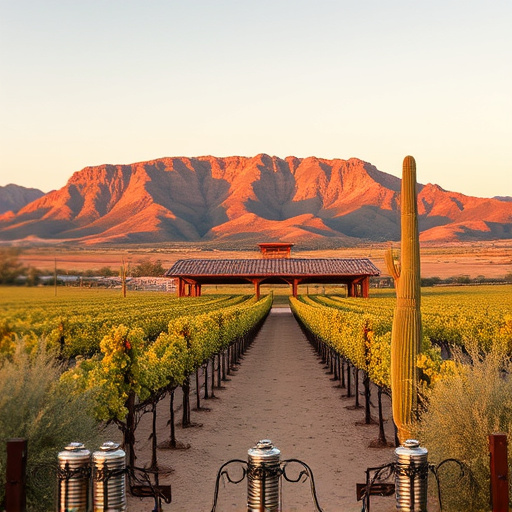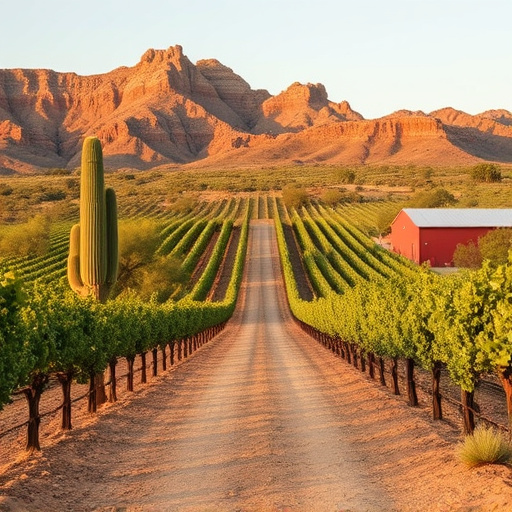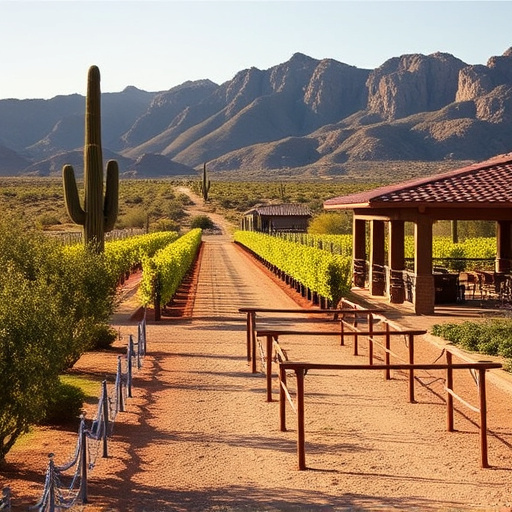Southern Arizona wineries thrive due to diverse microclimates that vary across regions, influencing grape cultivation and flavor profiles. From high-elevation cool temperatures ideal for acidic grapes to lower areas producing richer, fuller-bodied wines, these terroirs create unique wine experiences. Wine enthusiasts can explore this captivating symphony of flavors at local southern Arizona wineries, making the region a true game-changer for wine lovers.
“Uncover the enchanting world of microclimates and their profound impact on the distinctive terroirs of southern Arizona’s thriving wineries. This region, known for its diverse landscapes, presents unique conditions that shape the flavors of grapes, ultimately crafting exquisite wines. Our article delves into the science behind microclimates and explores a comparative analysis of these climate-driven vintages from various corners of southern Arizona’s vibrant winery scene.”
- Understanding Microclimates and Their Impact on Wine Terroirs in Southern Arizona
- A Comparative Analysis of Microclimate-Driven Wines from Different Regions in Southern Arizona Wineries
Understanding Microclimates and Their Impact on Wine Terroirs in Southern Arizona

In the realm of viticulture, microclimates play a pivotal role in shaping the unique characteristics of wine terroirs. Southern Arizona, with its diverse landscapes and varying environmental conditions, is home to several distinct microclimates that significantly influence the wines produced by local southern Arizona wineries. Each microclimate creates specific challenges and opportunities for grape cultivation, contributing to the region’s rich and varied wine portfolio.
These microclimates are defined by factors like temperature variations, sunlight exposure, wind patterns, and elevation changes. For instance, the higher elevations in some parts of southern Arizona offer cooler temperatures, ideal for cultivating grapes with higher acidity levels, while lower-lying areas experience warmer conditions, promoting the development of richer, fuller-bodied wines. Understanding these microclimates is essential for winemakers to select the right grape varieties and cultivation practices, ultimately shaping the distinct flavors and styles of southern Arizona winery offerings.
A Comparative Analysis of Microclimate-Driven Wines from Different Regions in Southern Arizona Wineries

In the vibrant landscape of southern Arizona wineries, microclimate plays a pivotal role in shaping the unique characteristics of each wine. A comparative analysis reveals distinct terroirs across regions, resulting in a symphony of flavors and aromas that captivate the senses. From the sun-drenched hillsides to the cooler, more elevated valleys, each area contributes its own indelible mark on the final product.
Wineries nestled in these diverse microclimates offer a fascinating glimpse into the art of viticulture. The temperature variations, solar exposure, and wind patterns influence not just the grape ripening but also the natural processes that enhance flavor profiles. As a result, wine enthusiasts can experience a captivating journey through southern Arizona’s terroir, where each region offers a distinct dance of flavors, making it a true game-changer for wine lovers seeking exceptional experiences.
In exploring the microclimates of southern Arizona and their influence on local wine terroirs, this article has revealed distinct characteristics that set each region apart. A comparative analysis of wines from different areas showcases the remarkable diversity within the state’s thriving southern Arizona winery scene. By understanding the unique microclimate conditions, winemakers can further refine their practices to produce exceptional, terroir-driven wines that highlight the beauty and complexity of the region.
